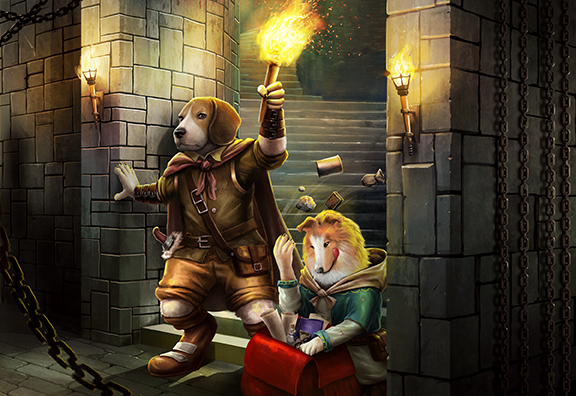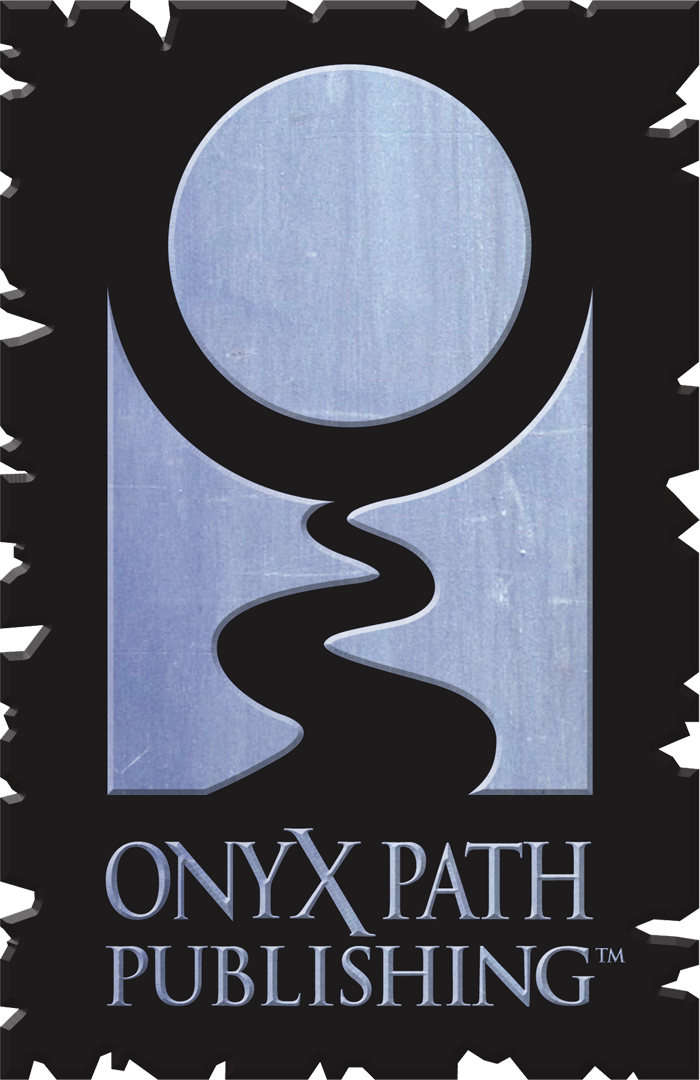Note: This blog is rewritten and expanded from material in “Buried Bones.” If you like this kind of advice, check the book out!

There are lots of ways to run just about any tabletop game. Small changes to the rules and setting can have an additive effect on creating a particular mood or style, which either emphasize certain parts of the game’s setting or wildly change it from its original intentions. But sometimes it can be a bit unclear what changes are useful for what styles, or even how those changes might modify things.
Both the original edition of Pugmire and the upcoming edition Realms of Pugmire have advice on how to “hack” a game into a different shape. But I thought I’d use Realms of Pugmire (which you can still pre-order!) as a good example of what kinds of chronicle styles you can get for the game, and what kinds of changes will help bring those styles around.
Silly
Silly chronicles are more than just light-hearted games. They’re explicitly comedic, and intentionally funny with low-stakes consequences for player actions. Realms of Pugmire starts off as light-hearted, but here are a few ways you can amp things up to be explicitly silly.
- Shorter Game Sessions: In my experience, players work their way past the gags and jokes about 1 to 2 hours in. So cut the session down to that length. Comedic television shows tend to be shorter as well, so the short, punchy length can reinforce to players that you’re here for a laugh before things get too deep.
- Funny Fortune: A new rule could be that players will always get a Fortune if the entire table breaks out in laughter at a joke (or groan audibly at a terrible pun). This will encourage players to keep the punchlines rolling, because everyone loves getting a reward for doing something that contributes to the game.
- No Death: You can even take death off the table entirely. Simply ignore any reference to dying, and assume instead that anyone with zero stamina points is just knocked out. It’s a simple change, but it does have knock-on effects to consider. For example, the shepherd spell “Spare the Dying” isn’t as useful when death isn’t an option, so you might want to rework it to be a simple healing spell that grants 1d4 stamina points, or something similar, to solve the problem.
Gritty
On the other hand, you can go the other direction and make things a bit darker and grittier. The original pitch for the game was called “Fall of Pugmire,” and you can channel that Gothic, elegiac feel if you want.
- No Rucksack Test: In Realms of Pugmire, players can make a Cunning test to see if characters pack something in their rucksack that isn’t listed on their character sheet. By getting rid of that test, characters have only what they have, which means that every item counts.
- Tougher Enemies: The enemies in the book are calibrated to be a challenging fight for equivalent character levels, but characters will generally win those fights. Using enemies that are a level or two higher than normal, as well as not using any characters with the Minion tag, can give characters tougher combats that require them to use every resource available.
- Political Animals: While the upcoming Curious Cats of Mau will have more focus on intrigue, it’s still intentionally shoved a bit into the background, making it something groups can opt into if they like. You can make that more of the focus of the game, putting characters as the focus of several intrigues. Muddy the waters between “good” and “bad” dogs and cats. Push the monarchies closer to all-out war between the city-states or the kingdom of Pugmire. Make it feel like everything can fall apart with a hasty word or an errant punch.
Epic
Epic is all about bigger-than-life storytelling, where everything feels like a legend in the making. Realms of Pugmire already draws on this epic fantasy tradition on some level, but you can really emphasize it with a few simple tweaks.
- Minions and Legendary Enemies: Emphasize both minions and legendary characters for epic-style play. Mobs of creatures defending a powerful warlord or a conniving necromancer are exactly the kinds of characters players love to hate. Speaking of which…
- Returning Enemies: Find ways to bring old enemies back. Maybe the characters keep running into Rondo Border-Collie, the Rat King, or Kibu the Red. Then add some more levels to them each time they return. Seeing old enemies come back more powerful than before definitely feels epic. (And remember those legendary rules!)
- Starting Artifacts: Give each player an artifact they can improve, right out of the gate. Attach a story to each: “This is my mother’s battleaxe” or “I stole this cloak from a noble’s castle the night she died.” Then, allow the character to improve the item every two levels, without spending an improvement. For those curious cats, instead give them a “family secret power” they can improve in the same way.
What are some other ways to make a chronicle feel different?
